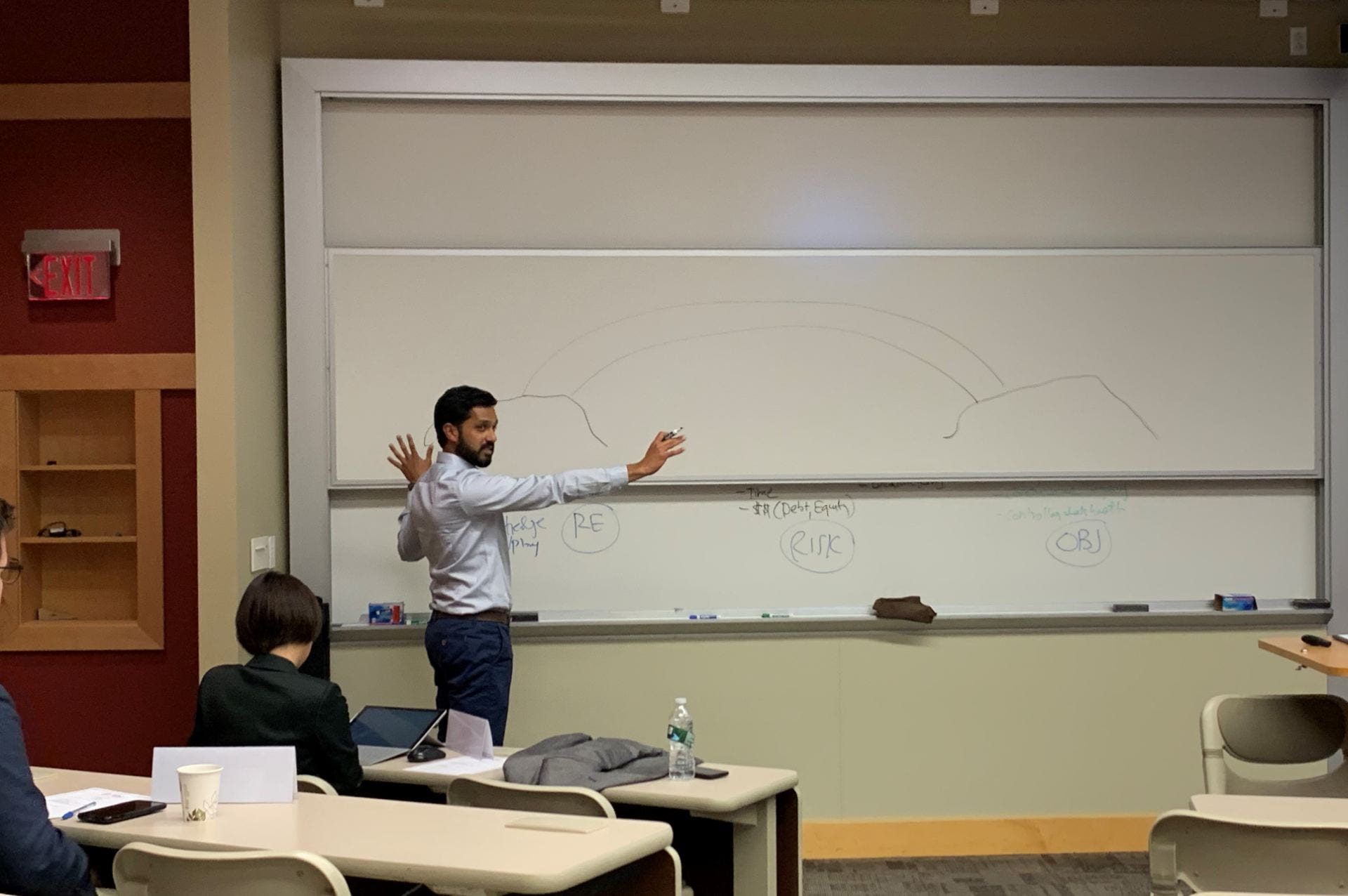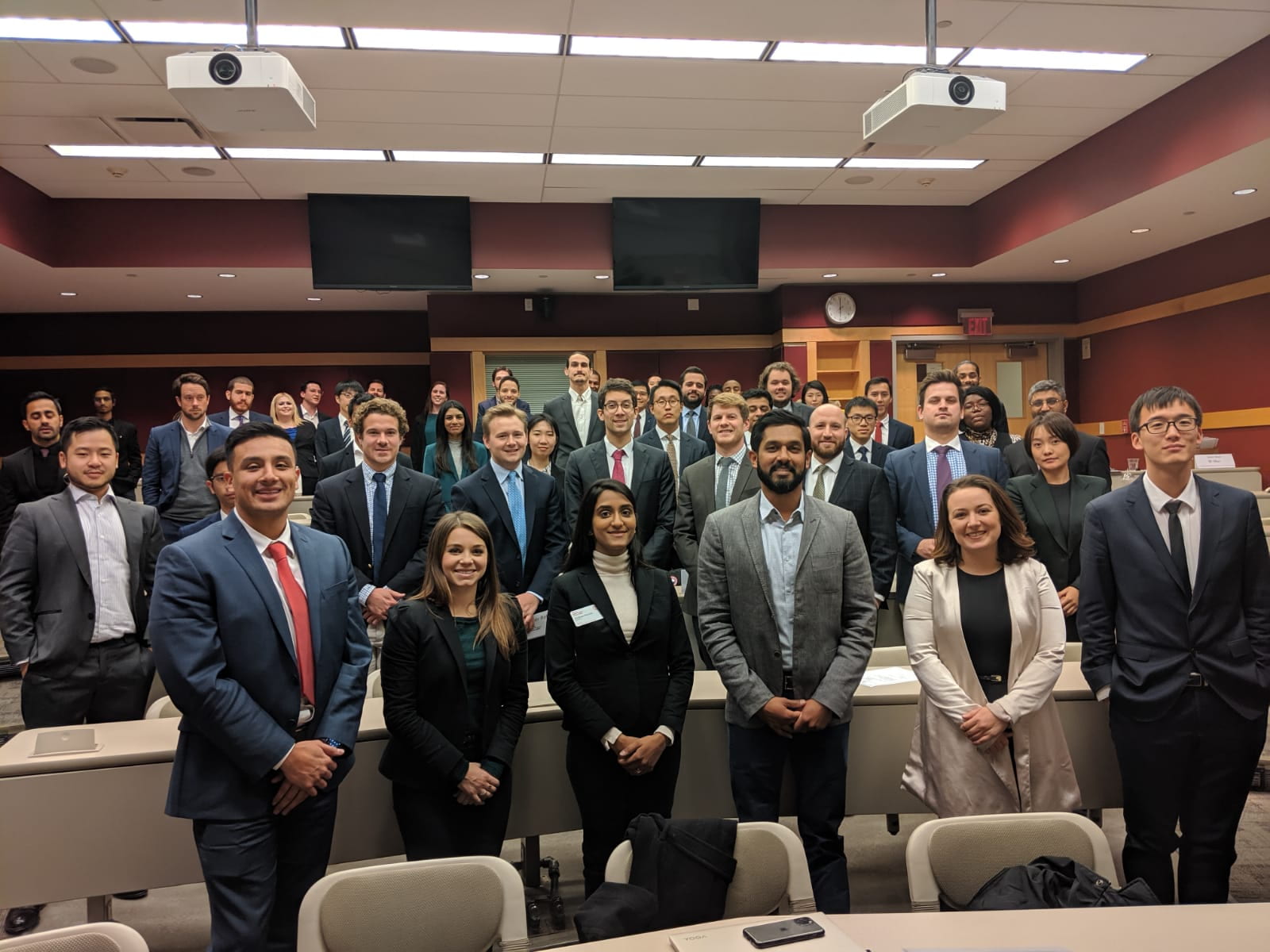How one person views risk, may be completely different from how somebody else sees it. This was the underlying theme of the day when Sajan Hansji visited the Baker Program in Real Estate at Cornell University this past Thursday. Sajan is an esteemed Hotelie who graduated from Cornell’s School of Hotel Administration in 2004, and co-founded Hansji Hotels Inc. In 2011, he spun off from the company and founded J Street Hospitality, where he is currently President, and oversees all developments and acquisitions.
Growing up in a family of hotel developers in California, Sajan always knew that he wanted to get into the hospitality business. However, his interest in the industry was less on the operational side, but rather in its real estate potential. While hotel operations are of definite value to the industry, Sajan has always found the underlying value of the asset to be where his passions lie. This has been the main focus of J Street Hospitality since inception.
In a very casual setting in the classroom, Sajan plotted the risk spectrum in real estate and the players involved. On the low-risk end of the spectrum, institutional investors pay high prices for stabilized properties On the opposite end of this risk spectrum, Sajan described the market where entrepreneurs, like himself, would be on the prowl for seemingly lower value properties deemed too risky for most investors. J Street Hospitality is poised to take a property on the high-risk end of the spectrum and convert it to an investment that becomes institutional quality. J Street credits this strategy in reaping generous returns that come with their appetite for risk. Sajan then used two case studies to present this idea to the intrigued listeners in the room.

The first case involved converting a low-income housing apartment to a hotel property. In California however, repurposing affordable housing can only be done by relocating all the existing tenants to another suitable apartment building and compensating them; or building an entirely new affordable housing complex for the existing tenants. Both options can involve a large enough cost that make these types of deals unfeasible, even for the riskiest of investors. Sajan recalled a conversation revolving around a list of buildings that were temporarily exempted from those replacement and relocating requirements. Having later done his research, he located the property and made an offer to the owners who may not have been aware of their building’s temporary exemption. Today, that hotel sits as a testament to the risky bet that J Street took on a property that was not originally fated for conversion.
The next case highlighted how sometimes a deal is not always what it seems. It can look straightforward, but it can also reveal something unexpected if due diligence is done right. Sajan recounts getting a call from his broker one day, asking him to look at a 10-acre hotel property in the middle of residential neighborhood in Southern California. Not one to usually invest in suburban assets, he was hesitant at first to visit the property, but did so nonetheless out of curiosity. When he arrived, the feeling was odd, but even more alluring. There were about 22 different buildings that accommodated the hotel rooms, as well as a community center on the same property. Sajan left feeling very inquisitive and spent the next few days doing due diligence on the property. As it turned out, the community center was built by the developer as part of his master plan for the adjacent residential development, and the hotel was also built by the same residential developer. If it walks like a duck, and quacks like a duck, then it probably should be a duck. This was the idea that Sajan explored further when he found that getting multifamily zoning on this property was relatively barrier-free. Furthermore, a density analysis proved that additional could be built on this 10-acre parcel, which probed the next question of what it would cost to purchase land in this area to build out the multi-family units. The answer to that question confirmed an irresistible arbitrage opportunity, and so, with a joint venture structure, he purchased the hotel, and exited the deal a month later to a multi-family developer. The hardest part about this deal, he says, is watching a brand-new hotel get torn down for redevelopment.
In his closing comments, Sajan discussed the kind of skills that young professionals can learn in order to build up their tolerance for risks. If risk is anything that we don’t fully understand well enough, then asking lots of questions, paying attention to the details, trusting intuition, and sensing when something is amiss can go a long way in reducing risk. Of course, experiences in life is also what allows these skills to develop and he hoped the students engage with this process as early as possible. The Baker Program in Real Estate enjoyed hearing Sajan speak, and thanked him for returning to his alma mater to share his knowledge and experience.

